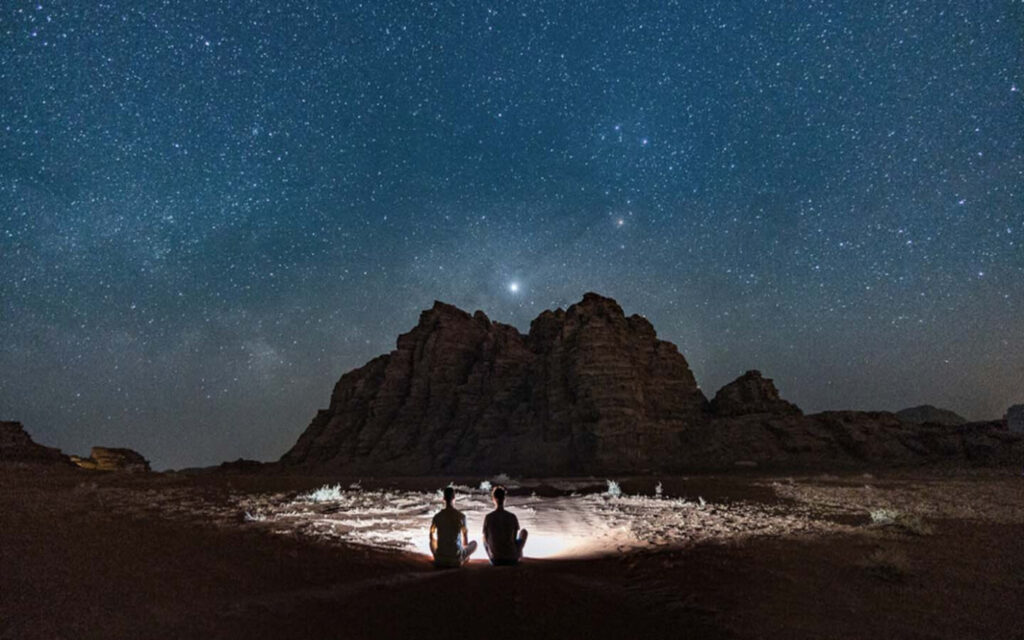
When you think of Dubai, you usually see tall skyscrapers, pompous hotels, and a huge cityscape in your mind’s eye. When it comes to the subject of “nature”, only man-made green oases, islands, and golf courses come to mind. But Dubai and the surrounding area have much more to offer.
Despite the great heat, the natural landscape around Dubai is home to many animals and plants. Animals such as antelopes, sand cats, and mountain gazelles have adapted to the difficult living conditions and feel very comfortable in this area. Numerous plants, such as acacias, also grow and thrive in Dubai’s nature reserve.
The desert in Dubai is known as the Dubai Desert Conservation Reserve. The reserve is only three minutes from the Dubai World Trade Center. It is the first nature reserve in the United Arab Emirates. In 2008 the reserve was added to the UN list of protected areas and is one of the few natural areas in the Middle East.
READ: 20 places to visit in the UAE for free or less than Dh20
The protected area extends over an area of 225 square kilometers and thus occupies 5% of the total land area. As early as 1996, around 6,200 trees were planted in the reserve. After a while, this planting had a positive effect and a natural plant seed bank developed. For the animals living there, such as gazelles or hedgehogs, the plants are protection and a source of food. There are now around 38 mammals and reptile species living in the Dubai Desert Conservation Reserve. These include the Arabian Cape phase, the sand fox, the red fox, and the Oman black cat. The thorn-tailed dragon, the sand gecko, and the sandfish are indigenous reptiles and have also settled in this reserve.
The flora in Dubai’s desert consists of desert bushes, the fagonia, and the Arabian primrose. The date palm, the ghaf tree, and the Christ thorn are also native to this area. Valuable honey, which is one of the most expensive varieties in the world, is obtained from the flowers of the Christ thorn.
Since Dubai has a very diverse and unique ecosystem, animal lovers have the best conditions for bird watching. Especially flamingos, dunlins, ospreys, and small herons cavort in the nature reserve. Over 400 species of birds have been sighted since the observations began. In the winter months over 25,000 water birds are drawn to the wetland to hibernate on their way to western Asia. With over 500 different animal and plant species, the nature reserve is one of the most diverse populated wetlands in the arid zone.
Visitors can visit the reserve between 9 a.m. and 4 p.m. every day. During Ramadan, visits are only possible from Sunday to Thursday from 9 a.m. to 2 p.m. Despite the extensive protective measures in this desert, tourism is one of the country’s most important sources of income. However, visitors are only allowed to enter selected areas of the protected area under guidance. The number of people is also limited. Scientists are allowed to access the other areas.
Only because of these strict restrictions is it possible for this multitude of plant and animal species to settle in this area. The nature reserve is managed by the Emirates Group. The company has already invested over 2 million euros in the programs and the protection of the reserve. The goal of the country and the company is to strike a harmonious balance between the rapid growth of Dubai and the preservation of nature.
The extensive protective measures have now been anchored in law since 2004. Only in this way is it possible that the species protection projects and the rearing programs are so successful and will remain so in the future. The Al Mama Desert Resort & Spa has existed since 1999. This hotel has a breeding station to protect endangered species. Plans are currently being drawn up for a similar environmentally friendly resort and spa hotel. At the end of 2009, the Wolgan Valley Resort & Spa should be ready and welcome its first visitors.

The Marmoom Desert Conservation Reserve will become the first unfenced nature reserve in Dubai and is expected to be created by 2030.
The desert area comprises ten percent of the entire Emirate of Dubai and consists of more than 40 hectares of bushland. More than 363 species of birds, 26 species of reptiles, nine different species of mammals, and 39 species of plants are at home here. 300 to 500 flamingos live in the nature reserve. You will stay at the numerous lakes that are spread over a total of ten kilometers in the reserve.

Ten platforms are planned for observing animals and birds as well as for observing the starry sky in the desert.
There should also be the opportunity for yoga and other relaxation sports. An outdoor theater operated with 5,000 megawatts of solar power is also planned.
READ: 20 photos of the beautiful deserts in the UAE
By 2013, more than 20 sports events are to take place in the Marmoom Desert Conservation Reserve every year. Special cycling tracks with a length of over 100 kilometers make cycling in the desert particularly attractive – unique in this length worldwide.
While the Marmoom Reserve is still in the planning stage, the Dubai Desert Conservation Reserve can already be visited with day trips or even overnight. The luxurious Al Maha Desert Resort & Spa is right in the middle of it all. The travel company EWTC, which specializes in Dubai travel, offers overnight stays and excursions into the desert.